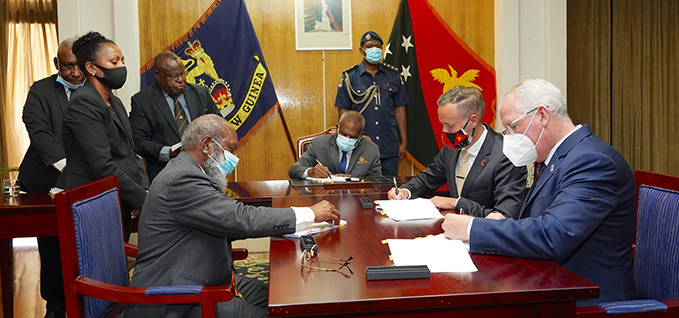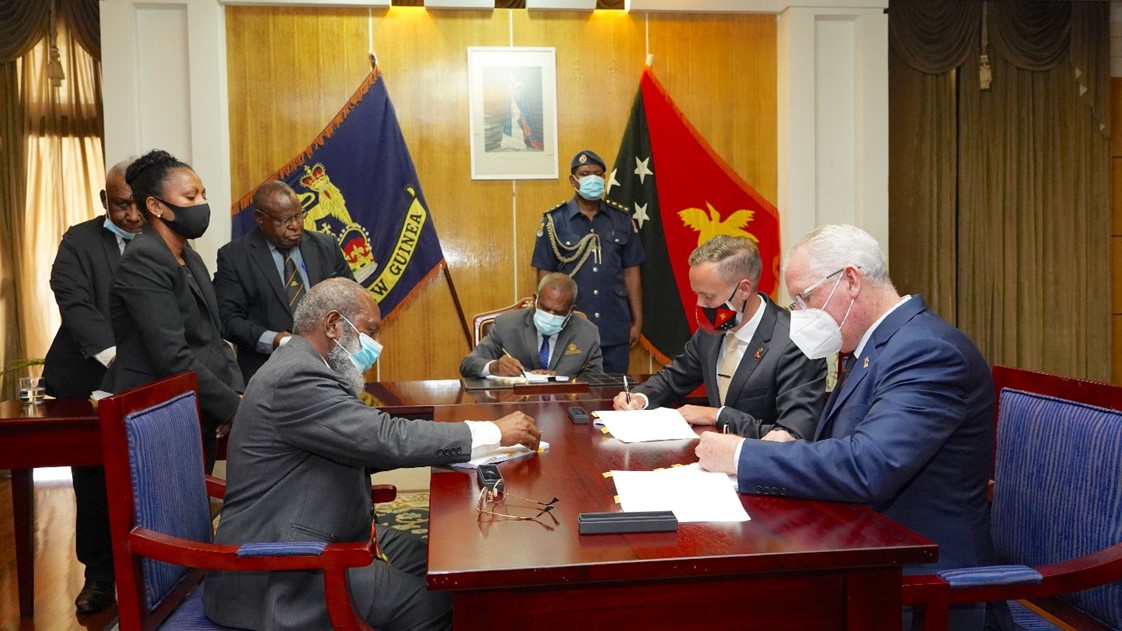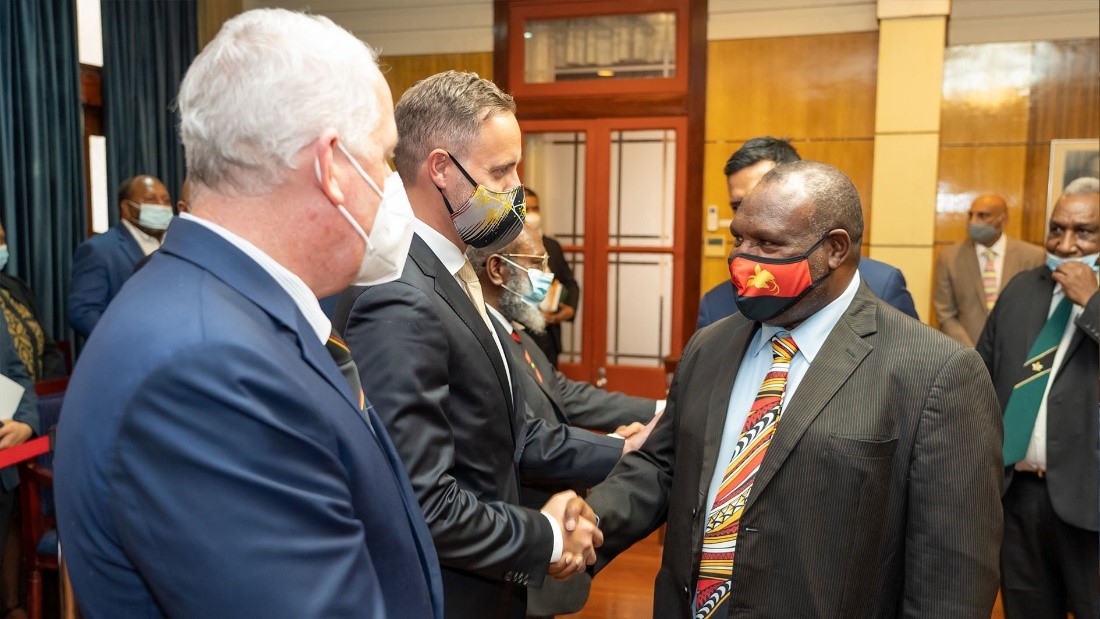ExxonMobil and the Independent State of Papua New Guinea have signed the P’nyang project gas agreement for the proposed development of the P’nyang LNG project.
The ExxonMobil-operated P’nyang project would deliver LNG by constructing new upstream facilities in Western Province linked to existing infrastructure. The agreement provides the fiscal framework for the project and supports project scoping and evaluation. The P’nyang field is estimated to have 4.36 trillion cubic feet of gas.
“The P’nyang project gas agreement marks a significant milestone and underscores the intent of all stakeholders to set a clear framework toward the P’nyang project’s future development,” said Liam Mallon, president, ExxonMobil Upstream Oil and Gas.
The P’nyang development in Western Province is proposed to commence following the Papua LNG project, which will be in Gulf Province. The phased approach to gas development would support ongoing economic growth in Papua New Guinea by supporting job creation, economic opportunity as well as training and skills development programs. In parallel, social investment initiatives in collaboration with the provincial and national governments as well as community stakeholders are designed to further enhance community livelihoods.
ExxonMobil is continuing to work with the government regarding their interest in purchasing additional equity in the project.
The P’nyang project would provide about four years of additional construction activity after Papua LNG and drive economic benefits for the country and participating provinces. Upon completion, the P’nyang Project would make available up to five percent of gas produced to Western Province or another agreed location to support the government’s electrification efforts.
The project would support job creation in Western Province and other involved provinces, with the Papua New Guinean workforce and local businesses benefiting from economic opportunity as well as training and skills development programs. In parallel, social investment initiatives in collaboration with the provincial and national governments as well as community stakeholders are designed to further enhance community livelihoods.
The P’nyang field is located within Petroleum Retention License 3, which covers 105,000 acres (425 square kilometers). Esso PNG P’nyang Limited, a subsidiary of Exxon Mobil Corporation, operates the license and, together with Ampolex (Papua New Guinea) Limited, has a 49 percent interest. Affiliates of Santos and JX Nippon have a 38.5 percent interest and 12.5 percent interest respectively.
Cautionary Statement
Statements of future events or conditions in this release are forward-looking statements. Actual future results, including project plans, schedules, capacities, production rates, timing, and resource recoveries could differ materially due to: changes in market conditions affecting the oil, gas, LNG and chemical industries or long-term oil, gas and LNG price levels or contract terms; political or regulatory developments including obtaining necessary regulatory permits; restrictions in trade, travel or broader government responses to current or future waves of COVID-19; reservoir performance; the outcome of future exploration and development efforts; technical or operating factors; the outcome of commercial negotiations; unexpected technological breakthroughs or challenges; and other factors cited under the caption “Factors Affecting Future Results” on the Investors page of our website at exxonmobil.com and under Item 1A. Risk Factors in our annual report on Form 10-K. References to “recoverable resource” include quantities of oil and gas that are not yet classified as proved reserves under SEC rules but that are expected to be ultimately recoverable and are provided on a gross basis.


